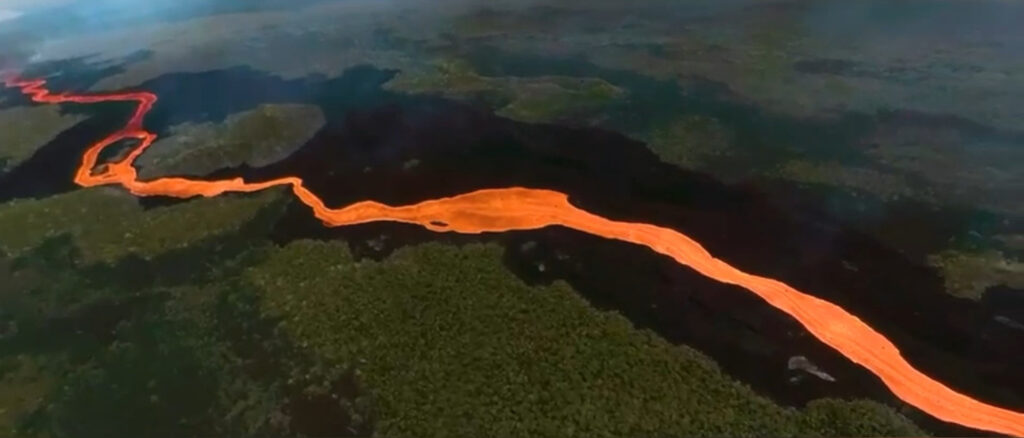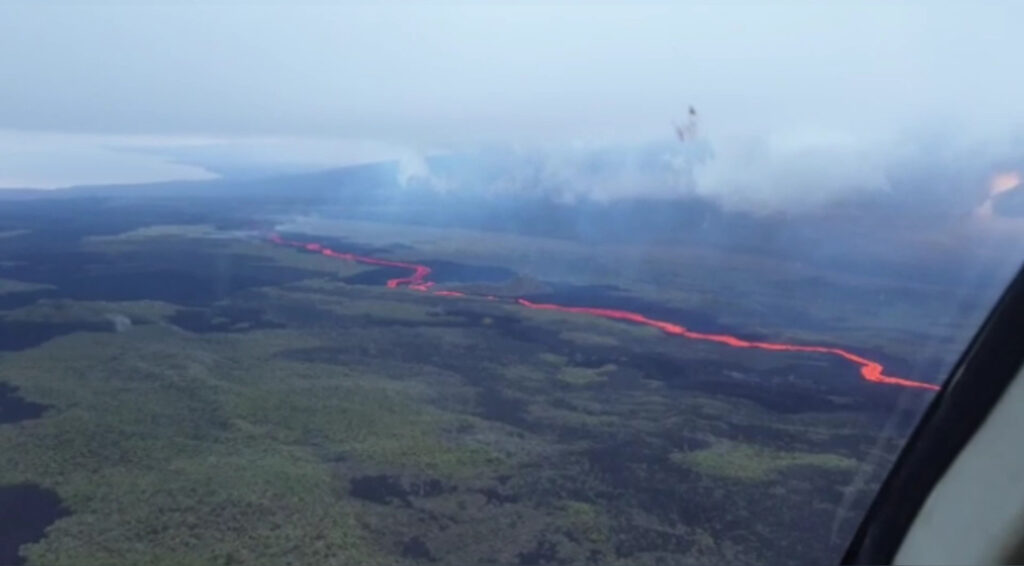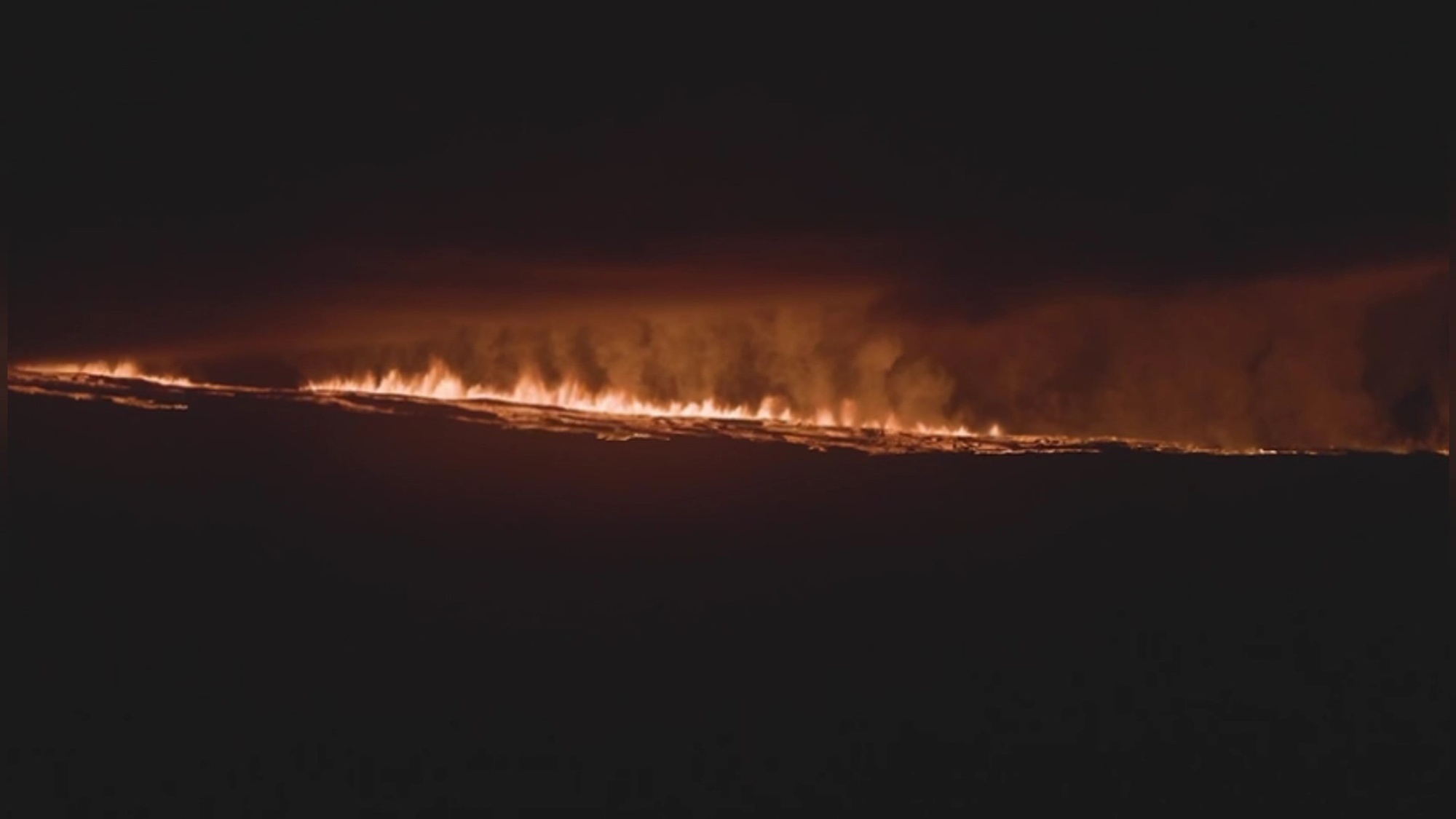This is the moment Ecuador’s environment minister flies over the Wolf Volcano eruption in the Galapagos Islands to witness the river of lava weaving its way towards the coast.
The eruption first took place at Wolf Volcano, also known as Mount Whiton, the highest peak in the Galapagos Islands, just before midnight on 6th January after seven years of relative calm.
Ecuador’s Geophysical Institute said the lava was flowing towards the island’s coast from a fissure in the south of the volcano.
Columns of smoke and ash filled the skies at heights of between 1,900 and 3,800 metres, and headed northwards.
The Galapagos National Park Directorate and the Galapagos Conservancy sent a team of eight park rangers and scientists, who were carrying out fieldwork with Galapagos pink land iguanas, to Wolf Volcano to assess the danger.
The team confirmed that the mess of iguanas is far from the affected zone and no additional measures need to be taken to protect them.
Minister of Environment, Water and Ecological Transition, Gustavo Manrique, said: “The Galapagos Islands are in constant formation, volcanic eruptions are one of the biggest attractions they have because it allows us to experience the power of nature firsthand.”
Related Story:
Lava Flows Across Isabela Island In Galapagos After Seven Year Calm
The Galapagos National Park shared new images of the volcanic activity on social media on 11th January with the message: “Minister Gustavo Manrique took a flight over the area of the Wolf Volcano on Isabela Island, confirming that the eruptive activity is continuing.
“Lava flows are located less than five miles from the coast, towards the east side of the island.”
The minister confirmed: “The direction of the lava flows and the development of the volcanic activity allows us to clarify that the population of pink iguanas is currently out of danger.”
Since the eruption began, magma has travelled around 15 kilometres (9 miles), moving through ancient lava fields from past eruptions and towards an area with endemic flora, according to the Galapagos National Park.

The lava from the volcano of the Galapagos Islands approaching the sea. (DPNG/Newsflash) 
The lava from the volcano of the Galapagos Islands approaching the sea. (DPNG/Newsflash)
Park spokesperson Danny Rueda said: “In the eruption impact zone, there is little emblematic fauna. However, species have evolved through natural processes that are part of the normal dynamics of the Galapagos ecosystem. The populations of iguanas, turtles and birds are located north of the volcano, where historically minor volcanic activity has been recorded.”
Environmental officials will continue to monitor the situation to record any changes to the ecosystem as a result of the volcanic activity.
To find out more about the author, editor or agency that supplied this story – please click below.
Story By: Lee Bullen, Sub-Editor: William McGee, Agency: Newsflash
The Ananova page is created by and dedicated to professional, independent freelance journalists. It is a place for us to showcase our work. When our news is sold to our media partners, we will include the link here.




